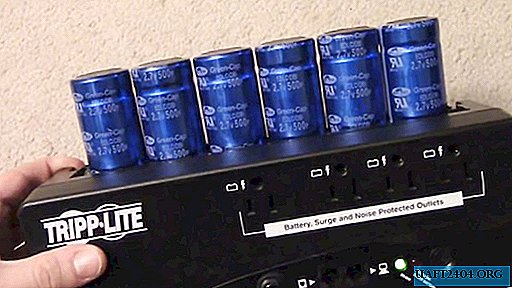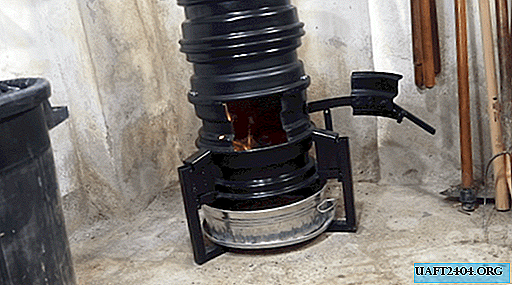Share
Pin
Tweet
Send
Share
Send

Nearly all uninterruptible power supplies use closed, maintenance-free lead acid batteries. The word "maintenance-free" itself makes it clear that it is impossible to restore such a battery, and if possible, then definitely not for long. And then the idea came up to replace the battery with supercapacitors (ionistors). They have an enormous service life, are absolutely tolerant of high loads, the number of charge-discharge cycles is more than 10,000. Therefore, if you are lucky, the uninterrupted battery will become eternal!
Will need
6 supercapacitors with balance protection board. You can buy ready for Ali Express.

A balance sheet fee is a must. Without it, the operation of ionistors in a series circuit is impossible, since everything is fraught with the failure of any element when recharging.
The capacity of 1 element in the circuit is 500 Farads and the voltage is 2.7 V. That is, 6 pieces will make up a battery that can be charged up to a maximum of 16.2 V.
Replacing the battery in the uninterruptible power supply with supercapacitors
In theory, as always, everything is smooth, but in practice, everything is not as we would like.

In this example, a UPS was used that had a maximum load power of 300 watts. A dead battery was removed in it and a board with supercapacitors was installed instead of the battery.
First start. And then the first failure: the UPS of course turned on, but refused to charge the ionistors. Why? The fact is that in the UPS circuit there was a protection that did not charge if the initial battery voltage is less than 10 V.
The second attempt. Then I took a third-party adapter with an output voltage of 10 V and simply charged the capacitors before turning it on.

Turned on the UPS and it finally worked. The ionistors continued to charge to the threshold voltage of the acid battery.

As a result, it was decided to remove the protection against low voltage, finalizing the UPS circuit.
But these are not all pitfalls. Further, the operating time was checked when the power was turned off. And the results are quite specific. The UPS shuts down when the voltage across the ionistors drops below 10 V

As a result, the total operating time, depending on the load power, could be from 5 to 30 seconds. Although, the load that this UPS used to supply was not quite powerful, its operating time was 18 seconds. In principle, for my tasks, this time was quite enough.
Installation in the housing
It was impossible to put this line in place of the standard battery. The decision was to make a cut in the side of the case and bring the elements out.


As a result, the appearance was not particularly terrible, given that the UPS is located in a secluded place.

As it turned out, the idea is quite working. Of course, the capacitance of the capacitors must be significantly increased in order to achieve a significant increase in operating time in the event of a shutdown.
Although there is a flip side to the coin: with an increase in the total capacity, the total initial charge time will also increase ... which will negatively affect the usability.
See the author’s video clip for a complete UPS upgrade with protection circuit adjustments.
Share
Pin
Tweet
Send
Share
Send











